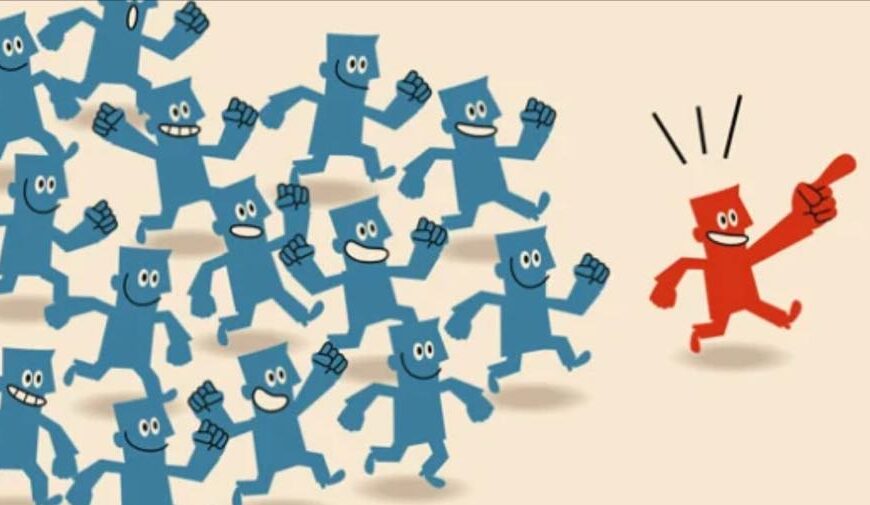By Hailey Nguyen
In recent years, coaching has become fundamental for leadership development in organizations in supporting leaders to achieve their full potential. However, its impact often extends far beyond the individual receiving coaching. The scientific paper “The Coaching Ripple Effect: The Effects of Developmental Coaching on Wellbeing Across Organizational Networks,” by Sean O’Connor and Michael Cavanagh, explores how coaching can create a ripple effect throughout an organization, influencing both the leader and their teams. This phenomenon is especially critical for fostering overall organizational well-being and effectiveness.
Individual Leadership Benefits
One of the most immediate and noticeable impacts of leadership coaching is the improvement seen in the individual being coached. For instance, in the study by O’Connor and Cavanagh, leaders who underwent eight coaching sessions showed significant growth in three key areas: goal attainment, leadership development, and psychological well-being.
1. Accomplishing Goals: Coaching helps leaders gain clarity and sharpen their focus, which enables them to set and reach both personal and organizational goals. The impact of these improvements often goes beyond individual success, driving wider change. For instance, a CEO from a software company, after undergoing personal development coaching, transformed his leadership style. This coaching helped him focus on empathy, inclusion, and diversity, leading to revitalized innovation and growth within the company. His shift in approach fostered a more inclusive culture, boosting overall team morale and productivity, which contributed to the company’s ongoing success.
2. Leadership Growth: Coaching plays a pivotal role in developing transformational leadership skills, such as motivating teams, fostering innovation, and driving change. O’Connor and Cavanagh found that leaders who received coaching showed significant growth in these areas, enhancing their ability to inspire and guide their teams effectively. A similar result was seen at a manufacturing company we partner with, where leadership coaching has been instrumental in building a culture of continuous learning and innovation. Managers, after receiving coaching, became more proactive in encouraging creative thinking and implementing positive changes throughout their teams, leading to greater organizational success.
3. Psychological Wellbeing: Stress and emotional exhaustion are common challenges for leaders. Coaching provides strategies for managing stress, leading to improved mental health and resilience. This is particularly important in high-pressure environments such as Google, where leadership coaching has been used to help executives manage the psychological demands of leading fast-paced, innovative teams. Healthier, happier leaders are better equipped to inspire and support their teams.
The Ripple Effect: Benefits for the Organization
While coaching benefits the individual leader, the influence does not stop there. O’Connor and Cavanagh’s research highlights how coaching can positively affect the well-being and performance of other team members, even those who did not directly participate in the coaching process. This occurs through improved communication, strengthened relationships, and better team dynamics.
1. Improved Communication and Relationships: Coaching often enhances a leader’s emotional intelligence and communication skills, resulting in better interactions with their teams. This was evident in a hospitality company we worked with, where leaders focused not only on outcome-based conversations but becoming more mindful of the impact of their words. By becoming more aware of their language, they improved how they delivered feedback, making it both constructive and empathetic. This change fostered open communication across teams, which not only improved team cohesion but also created a healthier, more supportive organizational culture. Leaders learned to balance their focus on results with emotional insight, leading to more effective leadership overall.
2. Proximity Matters: The study found that team members who were closest to coached leaders experienced the greatest improvements in their well-being. This suggests that leadership behaviors—such as empathy, strategic thinking, and adaptability—can be “modeled” by the team. At a food service company with whom we worked with, team members who worked closely with coached executives, demonstrated more leadership qualities, leading to greater team-wide satisfaction and productivity.
Leadership Behavior as a Model
This ripple effect—where leadership changes inspire broader organizational transformation—demonstrates the power of behavior modeling. As coached leaders grow, their improved behaviors influence those around them
The idea that leadership behaviors are contagious is central to the coaching ripple effect. As leaders become more effective, their teams become more engaged, motivated, and aligned with organizational goals. Moreover, the entire organization’s culture shifts, creating a more positive, productive environment for everyone involved.
Conclusion
Individual leadership coaching has far-reaching implications that go beyond the personal development of a single executive. By improving goal attainment, leadership capabilities, and psychological well-being, coaching helps leaders positively influence their teams and organizational culture. As shown in O’Connor and Cavanagh’s study, the ripple effect of coaching demonstrates how investing in leadership development can ultimately lead to enhanced well-being and performance across the entire organization.

